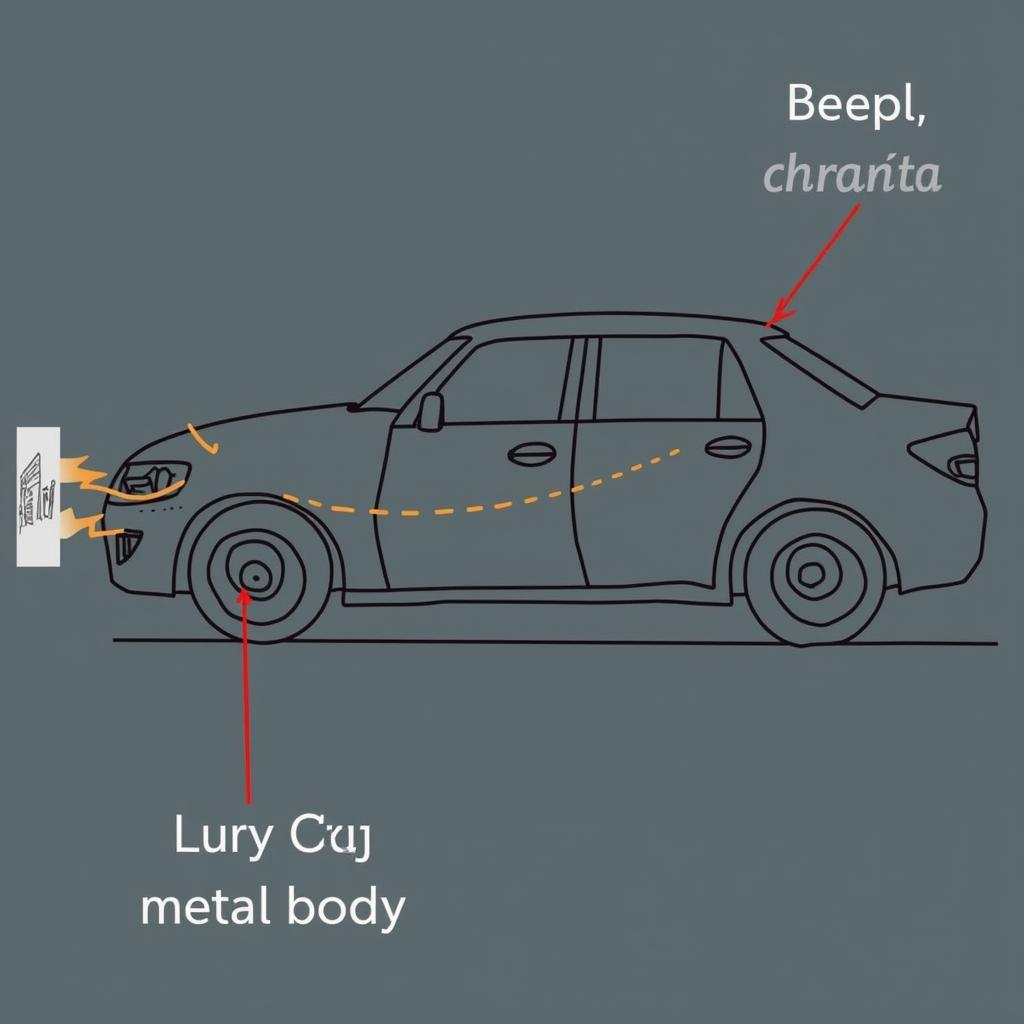Your car diagnostic tool just flashed a “short to earth” message, and now you’re understandably concerned. Don’t panic! While this might sound intimidating, understanding what a “short to earth” means can help you address the issue effectively. This article will guide you through the ins and outs of this common car electrical problem, explain why it happens, and discuss potential solutions.
Understanding “Short to Earth”
In simplest terms, a “short to earth” or “short to ground” means that the electrical current in your car’s system is taking an unintended path, bypassing its intended circuit. Instead of flowing through wires and components as designed, the electricity finds a shortcut directly to the car’s metal body (the “earth” or “ground”).
Think of it like water flowing through a pipe. A short circuit is like a hole in the pipe, causing the water to leak out before reaching its destination. Similarly, in your car’s electrical system, this “leak” disrupts the normal flow of electricity, preventing components from receiving the power they need to function correctly.
Why Does a Short to Earth Happen?
Several factors can cause a short to earth in your vehicle, including:
- Damaged Wiring: Worn-out, cracked, or melted insulation on wires can expose the live wire, allowing it to come into contact with the car’s body and causing a short.
- Loose Connections: A loose or corroded connection at a battery terminal, ground strap, or within a wiring harness can create a path for electricity to find an easier route to ground.
- Faulty Components: A malfunctioning electrical component, such as an alternator, starter motor, or even a light bulb, can develop an internal short that leads to a short to earth.
- Water Damage: Water ingress into electrical components, like fuse boxes or wiring connectors, can create a conductive path, resulting in a short circuit.
What Happens When There’s a Short to Earth?
A short to earth can cause a range of issues, from minor inconveniences to serious problems:
- Blown Fuses: Fuses act as safety devices. When a short occurs, the increased current flow causes the fuse to blow, breaking the circuit and preventing further damage.
- Dimming or Flickering Lights: The short circuit can cause voltage fluctuations, leading to dimming or flickering lights, especially when other electrical components are in use.
- Dead Battery: A constant short to earth will drain your battery quickly, leaving you stranded with a car that won’t start.
- Overheating: The shorted circuit creates resistance, generating heat that can melt wires, damage components, and even pose a fire hazard.
What to Do When Your Diagnostic Tool Shows “Short to Earth”
A “short to earth” diagnosis requires professional attention. Here’s what you should do:
- Don’t Ignore It: Ignoring the problem can lead to further damage, costly repairs, and safety risks.
- Avoid DIY if Unsure: Unless you have a strong understanding of car electrical systems, attempting to diagnose and fix a short circuit yourself can be dangerous.
- Seek Professional Help: Contact a qualified mechanic or auto electrician. They have the expertise and tools to accurately pinpoint and safely repair the source of the short circuit.
Preventing Short to Earth Problems
While some causes of short circuits are unavoidable, you can take steps to minimize the risk:
- Regular Inspections: Have your car’s electrical system checked periodically by a mechanic, especially if you notice any warning signs.
- Careful Handling: When working on your car’s electrical system, disconnect the battery to prevent accidental shorts.
- Quality Parts: Use high-quality replacement parts and wiring when doing electrical work on your vehicle.
- Keep It Dry: Address any water leaks or moisture issues in your car promptly to avoid damaging sensitive electrical components.
Conclusion
A “short to earth” diagnosis from your car diagnostic tool is a serious matter that requires immediate attention. Understanding what it means and the potential consequences can help you take the right steps to ensure your car is safe and running smoothly. Remember, when in doubt, consult a professional mechanic or auto electrician to diagnose and repair the issue properly.


